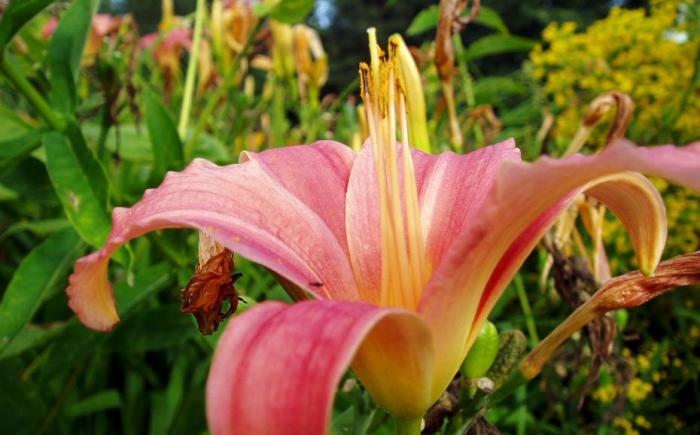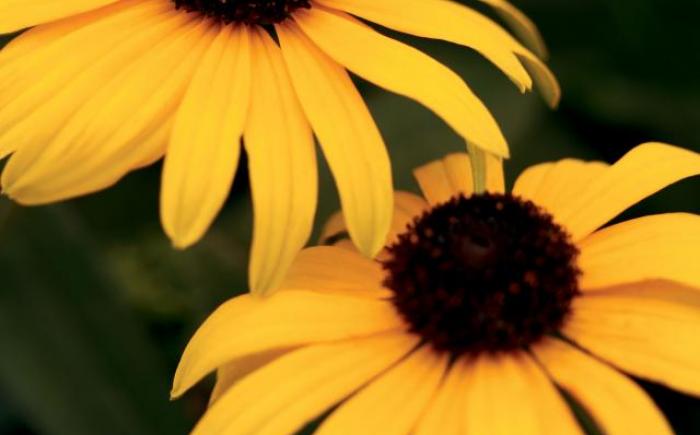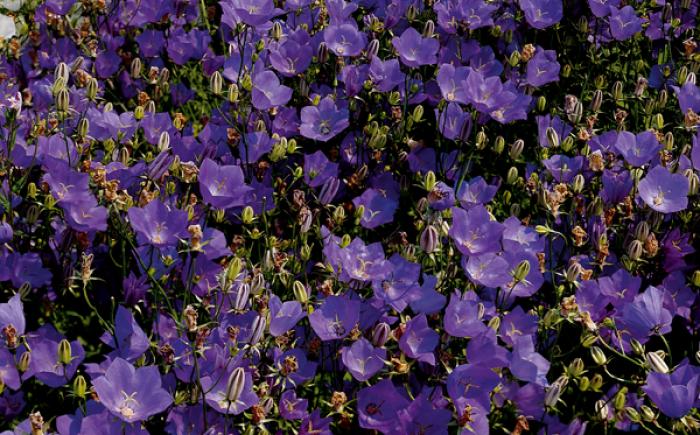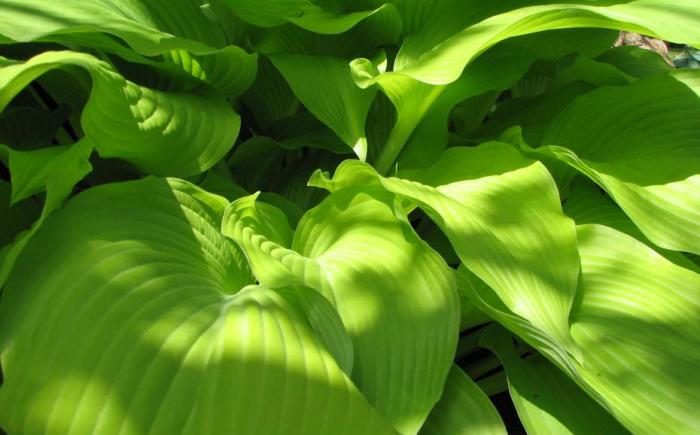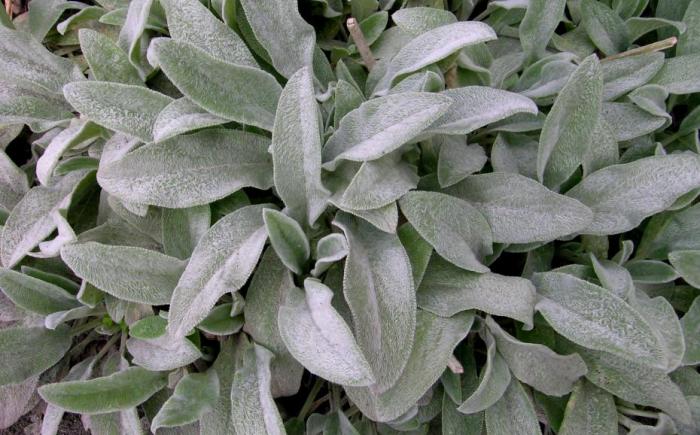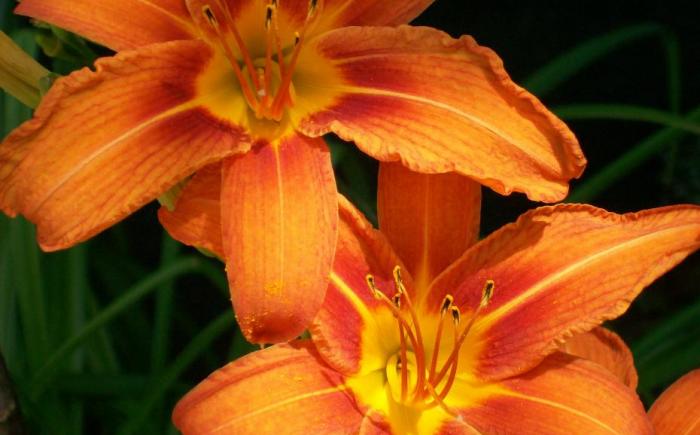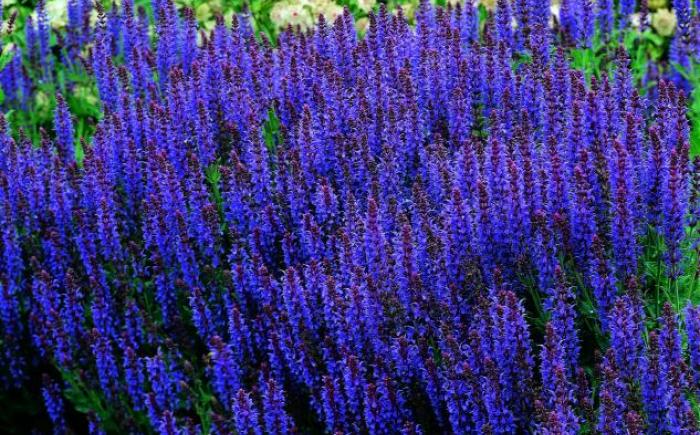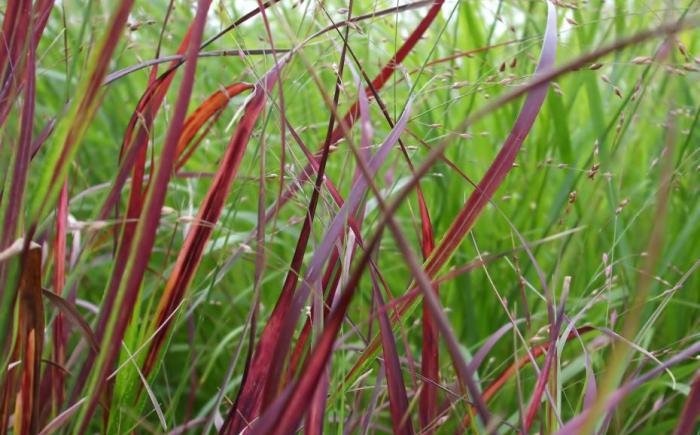
Perennials have been a part of almost everyone's life; these hardy plants come back again and again. Their diverse form and culture and seemingly endless supply of varieties contribute to the ever-increasing interest in perennials and ornamental grasses. Both Alsip Home & Nursery locations feature spacious departments devoted to our expansive line of perennials and ornamental grasses.
Too often gardeners are scared to work with perennials, since there are so many to choose from. Most are easy to grow and offer years of pleasure for your investment. Instead of blooming all season like an annual, their bloom time is shorter so they can come back to do it again. Keep in mind that since perennials don't bloom all season like annuals, other attributes of the plant become important (such as form, texture, and foliage color). Don’t feel you have to choose one or the other; annuals and perennials complement each other, so use them together.
 |
Flowering Perennials
A perennial is a plant that will live for 3 or more years. A flowering perennial is a plant that produces flowers for reproduction. The flowers of the perennials die each year but the roots remain alive to produce a new plant and blossoms in the spring. The perennial flower usually lasts 2 to 3 weeks or more within a season. Perennials require maintenance the flowers will need deadheading, pruning, and need to be divided every 3-5 years. Different types of perennials flower at different times of the season, so if you want color all year round you will need to mix different types to have color all year round. Popular Flowering Perennial vareieties you'll find at Alsip Home & Nursery include: Daylilies, Black Eyed Susan, Coneflowers, Clematis, and Sedum.
|
 |
Non-Flowering Perennials
Non-flowering Perennials can be defined as a group of plants that do not produce flowers for reproduction. They do not require deadheading, but will need pruning and need to be divided every 3-5 years. Non-flowering plants reproduce by spores, seeds, and vegetative parts. Popular Non-flowering Perennials you'll find at Alsip Home & Nursery include: Artemisia, Coral Bells, Ferns, Hostas, Ivy, and Lamb's Ear
|
 |
Ornamental Grasses
Incorporate Ornamental Grasses into your landscape to add charming color and texture to your garden. Find many varieties of warm and cool season grasses that are hardy and easy to maintain! Grasses that are not mowed but allowed to reach their full growth potential and are used in the landscape the same way as perennials or other ornamental plants. They can be upright or weeping in form may or may not have seed heads. They can vary in size from just a couple inches to 10 feet plus tall. Popular varieties of Ornamental Grasses you'll find at Alsip Home & Nursery include: Reed, Fountain, Maden, Pampass, Fescue, Blood, Sedge, and Switch Grasses.
|
 |
Ground Covers
Alsip Home & Nursery offers an incredible selection of Ground Covers offered in 32-50 cell flats for large planting or in 3.25" pots with larger specimens, great for an immediate impact. We carry the most popular names in ground covers including: Steppables and Foot Friendly Ground Covers. Both of these lines showcase popular varieties that can handle light foot traffic and are great for filling in tight spaces between rocks and on the sides of flagstone stepping.
Learn more about Ground Covers >
|
 |
Vines
Alsip Nursery offers many varieties of climbing vines such as Boston Ivy and Amethyst Falls Wysteria. Other popular varieties include Honeysuckle, climbing Hydrangea, climbing roses, and even some annual varieties such as Mandevila, Bouganvila, and Passion Vine
By far the most asked for type of vine we sell is the Clematis. It is available in 4” pots, gallon, and up to five gallon pots.Popular varieties include Jackmanii, Nelly Moser, and Sweet Autumn Clematis.
Learn more about Clematis >
|
Commonly Asked Perennial Questions:
What is a perennial?
A perennial is an herbaceous plant that lives three or more years. Herbaceous plants die back to the ground each winter. Most perennials are grown for blooms, but there are those (such as lamb's ear, hosta and artemisia) that are grown for the beauty of their foliage. The life span of various perennials can range from just a few years to decades.
Where should I use perennials?
Almost anywhere. Perennials are probably the most useful, versatile plants around. Use them in beds, borders, with evergreens, in containers, in cutting gardens or anywhere you need them. There are perennials suitable for almost every site, from hot and dry to damp and shady.
How do I choose which perennials to plant?
The site itself is the most important element in choosing the right perennials. Do you have sun or shade? What is the soil like? After that, the most important is bloom color and season. Consult with our staff for details about how tall and wide the plant grows, what it needs, when it blooms, descriptions of bloom forms, colors available and much more.
When should I plant perennials?
Almost anytime! Since most are now grown in containers, they can be planted throughout the growing season. When planting during the hot part of the season, be sure to provide extra water until the plant has had a chance to root out.
How do I plant perennials?
They aren't fussy. Just be sure to keep them at the same level at which they were growing in the container.
Do perennials require any special care?
Just like all your other plants, they will need fertilizing. Check occasionally for disease or insect problems. Deadheading (removing spent blooms) will often extend the blooming season. After a killing frost in the fall, remove all the dead foliage. Most perennials will benefit from being mulched for winter protection late in the fall.
What about dividing perennials?
Almost all perennials will perform best if divided every 3 or 4 years. Some of the more aggressive growers (like yarrow) can be divided even more often, and others (like peonies) less often, or never! Most reference books will tell you which varieties prefer to be divided, or stop by and ask one of our horticultural advisers.
Don't limit yourself!
There are hundreds of varieties that will grow here, many of which would be wonderful in your garden. And remember, perennials are forgiving. If you mistakenly put something tall in front of a shorter plant, or two colors that clash near each other, move them at the end of the season.






